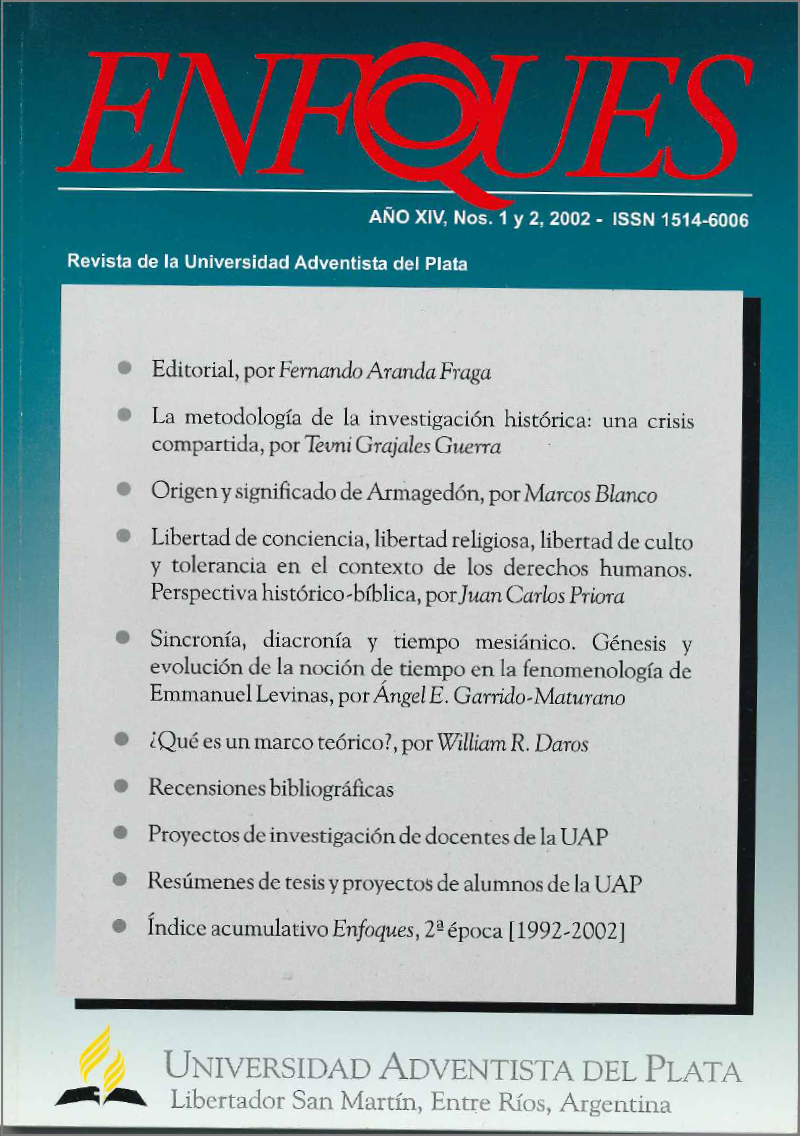Sincronía, diacronía y tiempo mesiánico Génesis y evolución de la noción de tiempo en la fenomenología de Emmanuel Levinas
Keywords:
Levinas – temporalidad – sincronía – diacronía – mesianismoAbstract
En la fenomenología del tiempo de E. Levinas se pueden distinguir tres etapas que se corresponden respectivamente a tres obras diferentes: Le temps et l’Autre (1947), Totalité et Infini (1961), y Autrément qu’être ou au-delà de l’essence (1974). Este artículo reconstruye sistemáticamente estos tres períodos, expone la evolución progresiva de la fenomenología levinasiana del tiempo y procura mostrar en qué medida y por qué el sentido último de la relación del hombre con el estrato más profundo y originario del tiempo —la diacronía del lapso— es religioso y radica en la temporalización mesiánica del tiempo diacrónico. SummaryIn E. Levinas‘s phenomenology of time three stages belonging to three different works can be distinguished: Le temps et l’Autre (1947), Totalité et Infini (1961), and Autrément qu’être ou au-delà de l’essence (1974). This paper systematically reconstructs these three periods, displaying the progressive evolution of Levinasian phenomenology of time, and attempts to show to what extent and why the ultimate sense of man‘s relation with the deepest and original stratum of time —the diachronia of lapse— is religious, stemming from the messianic temporalization of diachronic time.Downloads
Download data is not yet available.
Downloads
Published
2017-07-10
Issue
Section
Articles




